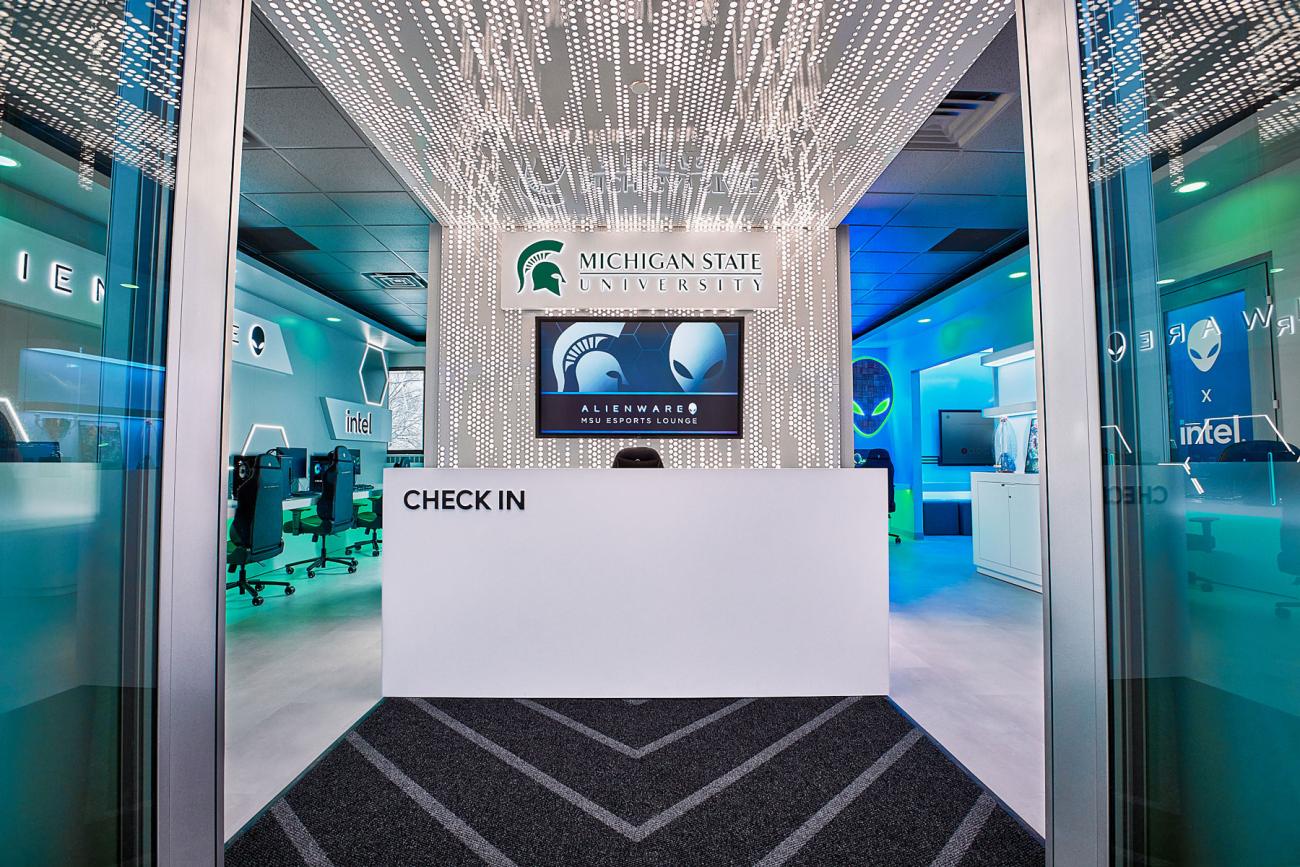Behind the Scenes @ MSU: from student lounge to elite gaming lounge
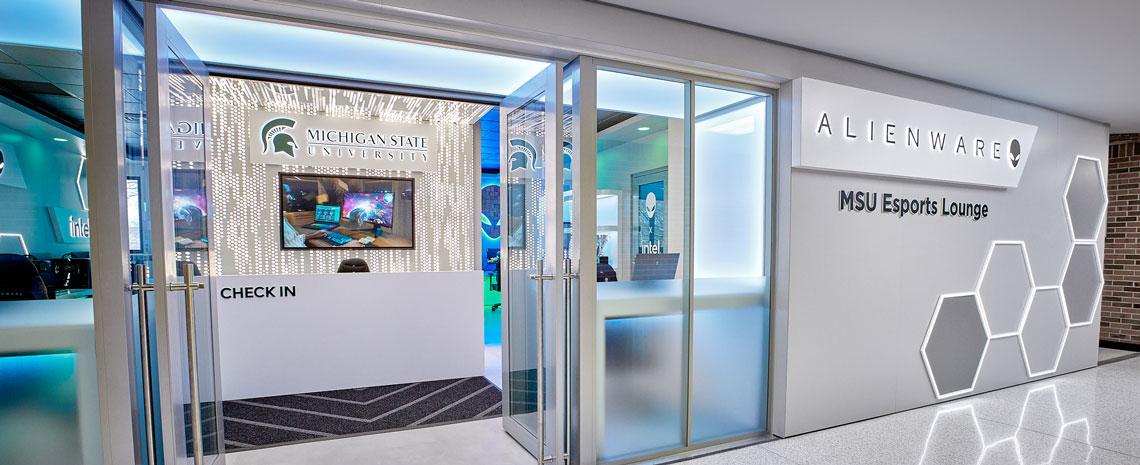
Danielle Fowler
March 6, 2024
Thanks to a partnership with Dell Technologies, a new space at MSU provides an elite gaming environment for students to train and compete in esports at the highest level: the Alienware MSU Esports Lounge.
Located in the College of Communication Arts and Sciences (ComArtSci), the lounge is the first higher education esports facility Alienware has helped establish in Michigan—and one of three such facilities nationally.
Preparing the space for Alienware’s installation was a challenge, but one that IPF’s Alterations and Improvements crew was more than up to meeting.
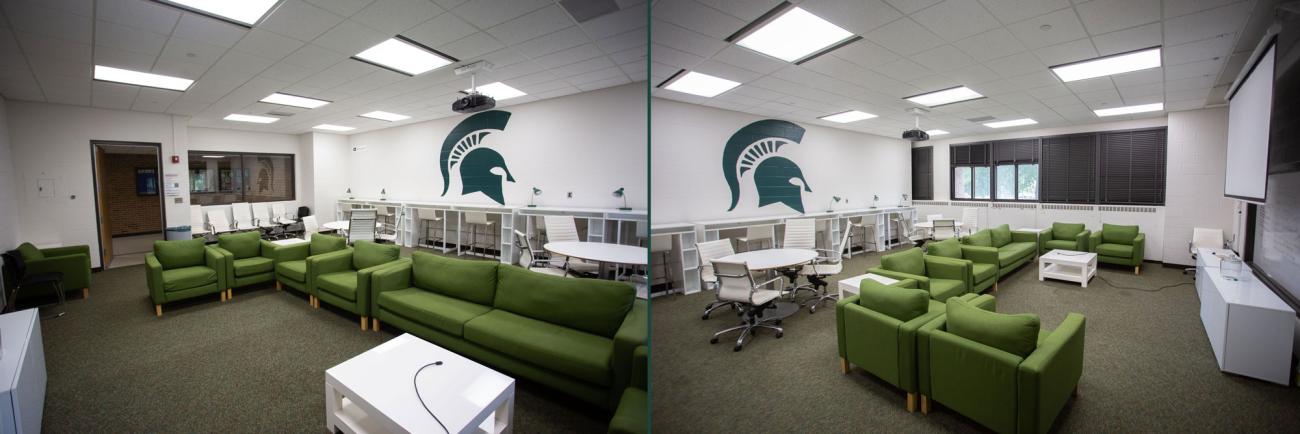
IPF crews began with a nondescript student lounge space and exacting requirements for the creation of the esports lounge.
“It was not a typical construction project by any means,” said Brian Kusch, broadcast and systems information engineer in ComArtSci. “The design was very detailed but not yet finalized; I needed to know, once we got the green light, the drop dead latest we could start on the renovations for a January ribbon cutting.”
Kusch worked with Brandon Charland, IPF engineer and architectural designer, and Nick Kramer, IPF skilled trades supervisor, to plan and execute the build. Alienware’s design company, Pinnacle, was based in California but needed to be closely involved during the whole process to ensure the space met the necessary specifications.
Readying the space involved more than just ripping out old carpet and painting walls. The esports lounge features 12 Alienware Aurora R16 battle stations, Alienware m16 laptops, a console gaming space, a varsity room and a broadcast studio. Supporting all that technology while meeting safety regulations required an almost head-to-toe rework of the space.
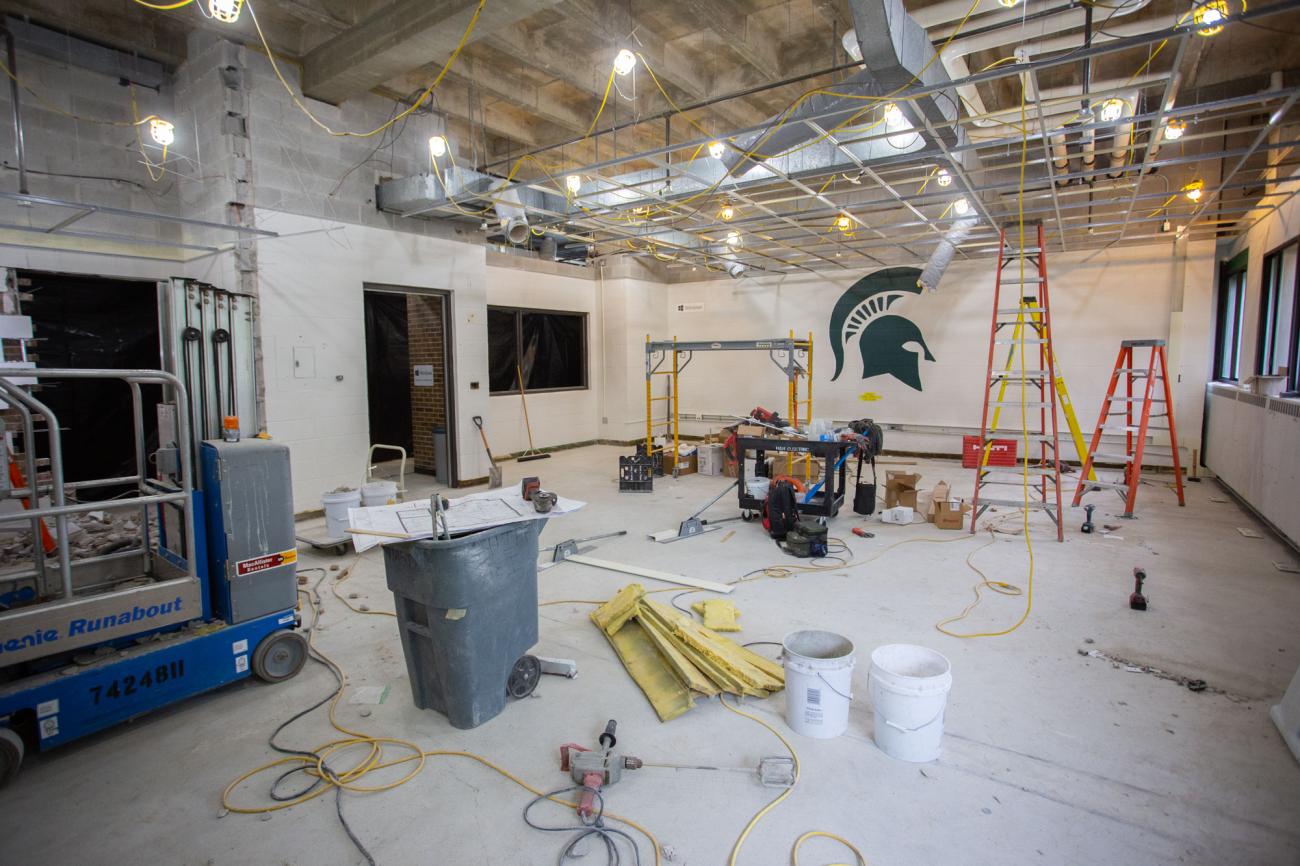
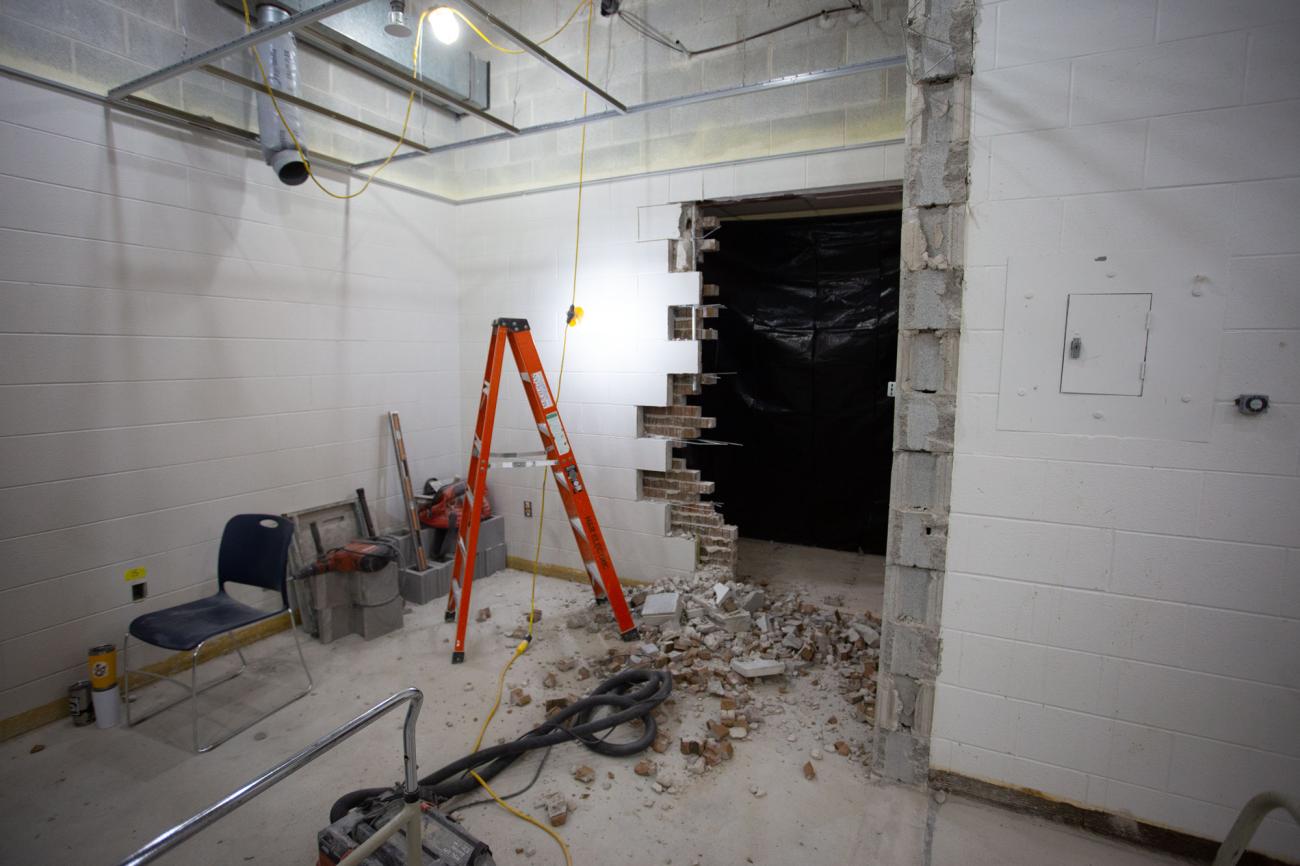
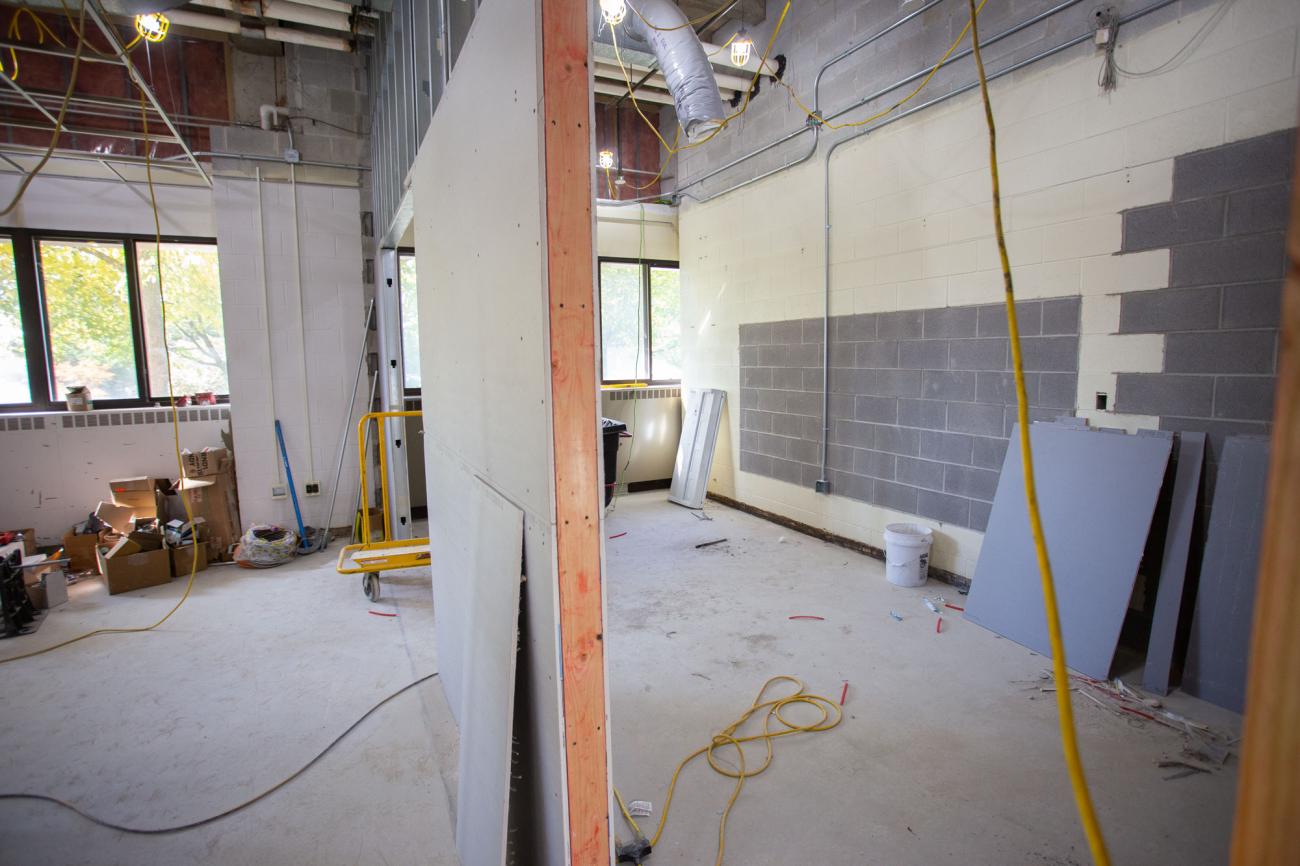
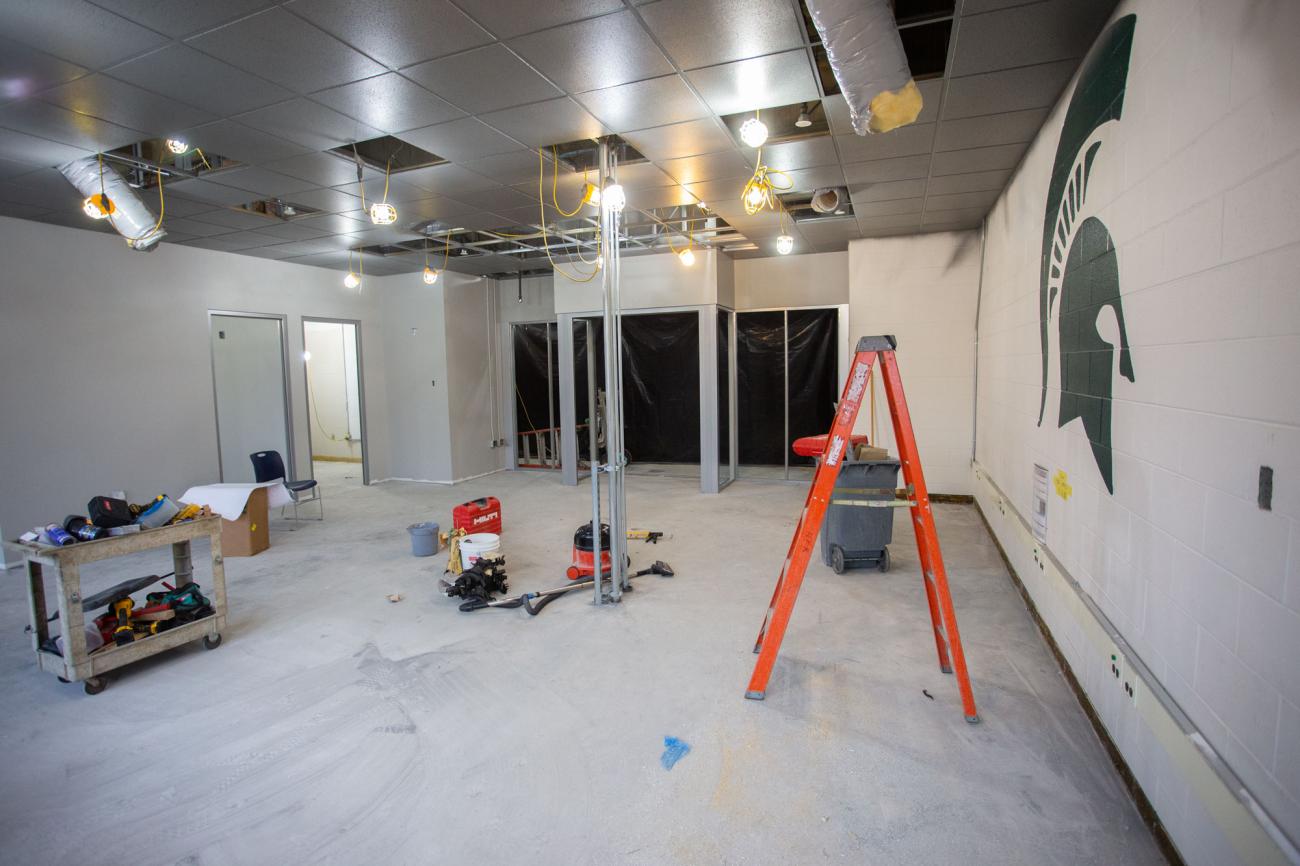
That included cinder block wall demolition, moving and replacing doorways and windows, installation of a new fire suppression system with bespoke sprinklers to accommodate the ceiling design, installing struts to support large LED backlit panels, constructing an entirely new entranceway, building out new walls, and wiring the entire space for electricity and high speed data drops, all while ensuring that service in other parts of the building wouldn’t be disrupted by the work.
“While we were working, we’d talk with Pinnacle over video chat,” said Kramer. Members of his crew would hold their phones up to areas in the suite to coordinate build decisions on the fly. “If there’s something like a bulkhead that we can’t move, we have to make quick decisions. My carpenter can see the issue, but then he has to explain it over FaceTime and problem solve with someone thousands of miles away.”
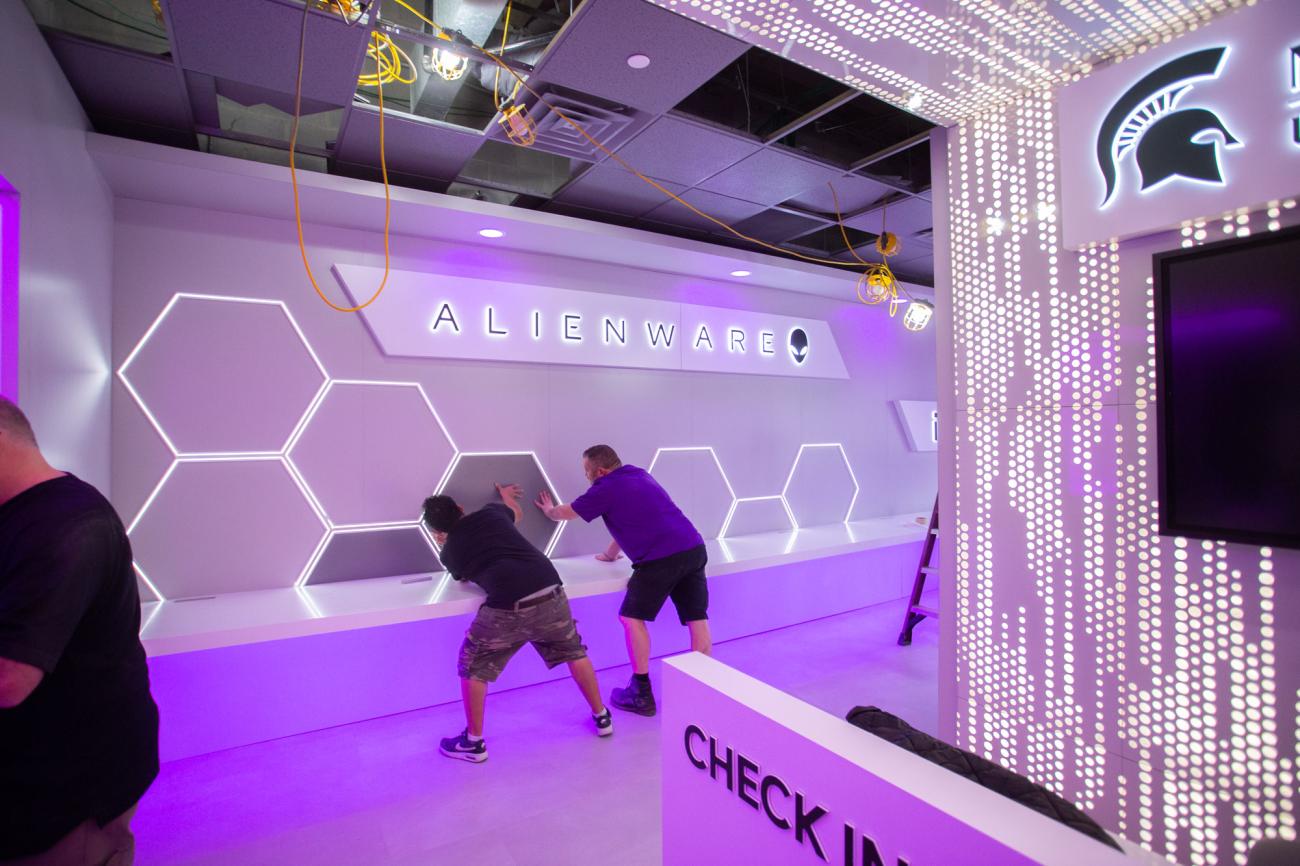
“It was almost like building the boat while you’re in it,” said Kusch. “Dimensions were insanely critical on all the components. Brandon, Nick Kramer, and Nick’s team, they were phenomenal. We had to meet two or three times a week—four or five near the end—and the plans were constantly changing.”
A huge thank you to the members of the IPF team who made this project possible: Jed Asher, Glenn Becker, Mike Becker, Brandon Charland, Derek Crowl, Derek Cuthbert, Jeff Degenfelder, Mark Denda, Ray Doyle, Grant Droste, Andrew Finch, Dean Geisenhaver, Scott Goerge, Scott Halfmann, Kane Howard, Cade Hunt, Tony Huntoon, Nick Kramer, Zach Kiefer, Mike Lark, Jack Lennamen, James Leonard, Jeff Leonard, Nick Martin, Mark McKay, Tom Miller, Justin Morse, Tony Murdock, Brandon Platte, John Pline, Mike Poglese, Mike Ramirez, Dave Robertson, Austin Rusnell, Noland Saunders, Frank Schafer, Will Schmidtfranz, Eric Simmon, Aaron Starmer, Chad Stowe, Brandon Summer, Victor Ward, Dave Wiebert, and John Young.
